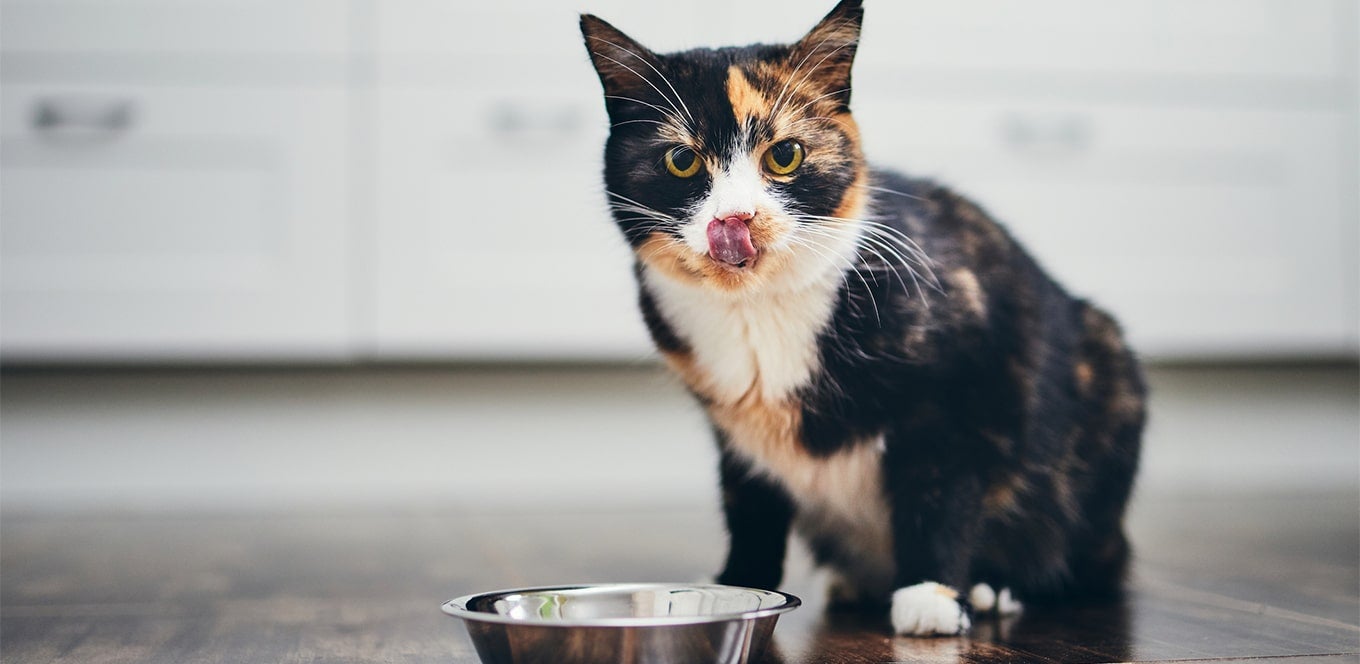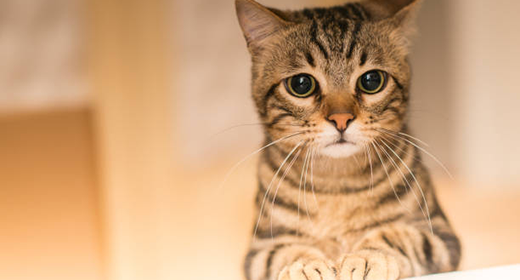

Knowing your cat needs a change in their diet is one thing, but knowing how to make that change is something else! Cats are creatures of habit, so it’s not uncommon for them to prefer their current food to anything new. Change disrupts their routine, which can impact their behavior and their digestion.
Thankfully, when the time has come to change your cat’s diet, a little planning and preparation goes a long way toward making the transition easier for them (and for you).
The following tips will help you change your cat’s diet and successfully transition your cat to a new food:
There are lots of reasons to consider changing your cat’s food — maybe you have a new kitten to wean, a kitten who’s all grown up now or an adult cat entering their senior years. In addition to normal aging, advice from the vet is a common reason to change what you’re feeding your cat. Cats that need help reducing their weight or managing excessive hairballs might need the support of a new food designed with those needs in mind. Whatever your reason for changing your cat’s diet, make sure the new food will suit their needs. That way you only have to make the transition once, and can avoid upsetting their stomach by changing the routine too often.
Going slow is paws down the most successful way to ease your cat into a different diet. Start by mixing 25% new food with 75% familiar food. Slowly change the proportions over the next three days or so by gradually increasing the amount of new food and decreasing the amount of their familiar food. Think of it as a kind of weaning — at the end of this process, you should be feeding (and your cat should be eating) just the new food.
Your cat may choose to eat only the familiar food, or not eat at all … at first. But a healthy cat can miss meals for a day or two without causing health problems. Slow, steady and consistent wins this race!
How would you feel if someone tried to force you to eat strange food you didn’t want?
Aggressively dumping the new food into your cat’s dish and declaring that your cat had better eat it might inspire your cat to do anything besides eat!
A little gentleness in your approach goes a long way. Try using a pleasant tone of voice and encouraging your cat to taste the new food. Even if they don’t go for it at first, a gentle approach still goes over much better than an aggressive one.
Cats train us as much as we train them. Giving in to their demands reinforces that their refusal to eat the new food is acceptable, which makes transitioning to the new diet even more challenging in the long run.
So don’t give up! Don’t be tempted to revert back to your cat’s familiar foods, and don’t give your cat treats or table scraps during the initial three-day period.
This is the toughest dietary transition of them all, but there are a few ways to make the process easier. If your cat resists eating dry food for more than a few meals, try mixing a little warm water with it and maybe even warming the moistened food in the microwave for a few seconds.
If you mix dry food with water, remember to discard any uneaten leftovers after 20 minutes to prevent spoilage. (The same rule applies for wet food.) After your cat is used to the moistened dry food, you can gradually transition to serving the same food dry.
Changing your cat’s diet is sometimes necessary to help them live a happy, healthy life. The process of switching what, how or how often you feed your cat can be a little bumpy, but you can do it! By going slowly, staying patient and encouraging, sticking to the plan and making the transition as easy as possible, you’ll be giving your cat what they need and helping them adjust as comfortably as possible.


Our cat food products contain animal-based proteins that provide all the essential amino acid requirements for cats. In addition, special refining and quality assurance tests ensure that we only use high-quality, highly digestible protein sources for increased digestibility.
Cats, best fed as true carnivores, require essential nutrients that aren't found in plant proteins such as soybean meal. For example, cats require taurine, which can only be found in animal-based proteins.
There are two important types of fatty acids for cats, omega-6 and omega-3 fatty acids. Omega-6 fatty acids, found in chicken fat and corn, are essential for maintenance of skin and coat and proper membrane structure. Omega-3 fatty acids are found in ingredients such as canola, fish meal or fish oil, and flax. Omega-3 fatty acids have been shown to be important in blood clotting and in managing inflammation, among other things. All of our products contain sources of omega-6 and omega-3 fatty acids.
IAMS™ research has shown that including omega-6 and omega-3 fatty acids in a ratio between 5:1 to 10:1 provides for optimal skin and coat condition in dogs. All of our products contain an adjusted omega-6:omega-3 fatty acid ratio between 5:1 to 10:1.
IAMS research has shown that moderately fermentable fiber, such as beet pulp, enhances intestinal health. The fermentable part of the fiber is broken down by intestinal bacteria to provide short-chain fatty acids, an energy source for intestinal cells. The non-fermentable component provides bulk for normal feces.
Using only highly fermentable fibers can cause problems, such as excess gas, while using only non-fermentable fibers, such as peanut hulls, promotes excess stool volume, because they are of no nutritional value.
All of our products, including IAMS ProActive Health™ Adult Original with Chicken, contain a patented fiber system of moderately fermentable fiber to help keep dogs’ and cats’ digestive systems healthy.